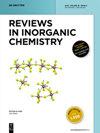Comparative analysis of dye degradation methods: unveiling the most effective and environmentally sustainable approaches, a critical review
IF 3.1
3区 化学
Q1 CHEMISTRY, INORGANIC & NUCLEAR
引用次数: 0
Abstract
The constant increase in population and as a result increase in industrial activities in many areas, such as textiles, cosmetics, leather, polymers, and food processing leads to the contamination of water sources with different dyes. Thus, the removal of dyes from contaminated water sources to make water reusable is the utmost requirement of the time in order to get environmental sustainability. The reason of removal is that many dyes and pollutants present in dyeing wastewater from industries have detrimental impacts on plants, wildlife, and humans. To lessen the negative effects of dye wastewater on the environment and living beings, it should be processed first to remove un-wanted components before being released in the water sources. However, due to some drawbacks of dye removal technologies, it is challenging to settle on a single solution that addresses the current dye effluent problem to make water clean. In the current work, we tried our best to elaborate different methods adopted for the treatment of dyes polluted wastewater with respect to their implementation along with drawbacks and advantages.染料降解方法的比较分析:揭示最有效、最具环境可持续性的方法,批判性评论
随着人口的不断增长,纺织、化妆品、皮革、聚合物和食品加工等许多领域的工业活动也随之增加,导致水源受到不同染料的污染。因此,为了实现环境的可持续发展,当务之急是去除受污染水源中的染料,使水可以重复使用。去除的原因是,工业染色废水中的许多染料和污染物会对植物、野生动物和人类产生有害影响。为了减少染色废水对环境和生物的负面影响,在将其排放到水源之前,应首先对其进行处理,以去除不需要的成分。然而,由于染料去除技术存在一些弊端,要找到一种单一的解决方案来解决目前的染料废水问题,使水源变得清洁,是一项挑战。在目前的工作中,我们尽力阐述了处理染料污染废水所采用的不同方法,以及这些方法在实施过程中的缺点和优点。
本文章由计算机程序翻译,如有差异,请以英文原文为准。
求助全文
约1分钟内获得全文
求助全文
来源期刊

Reviews in Inorganic Chemistry
化学-分析化学
CiteScore
7.30
自引率
4.90%
发文量
20
审稿时长
1 months
期刊介绍:
Reviews in Inorganic Chemistry (REVIC) is a quarterly, peer-reviewed journal that focuses on developments in inorganic chemistry. Technical reviews offer detailed synthesis protocols, reviews of methodology and descriptions of apparatus. Topics are treated from a synthetic, theoretical, or analytical perspective. The editors and the publisher are committed to high quality standards and rapid handling of the review and publication process. The journal publishes all aspects of solid-state, molecular and surface chemistry. Topics may be treated from a synthetic, theoretical, or analytical perspective. The editors and the publisher are commited to high quality standards and rapid handling of the review and publication process.
Topics:
-Main group chemistry-
Transition metal chemistry-
Coordination chemistry-
Organometallic chemistry-
Catalysis-
Bioinorganic chemistry-
Supramolecular chemistry-
Ionic liquids
 求助内容:
求助内容: 应助结果提醒方式:
应助结果提醒方式:


